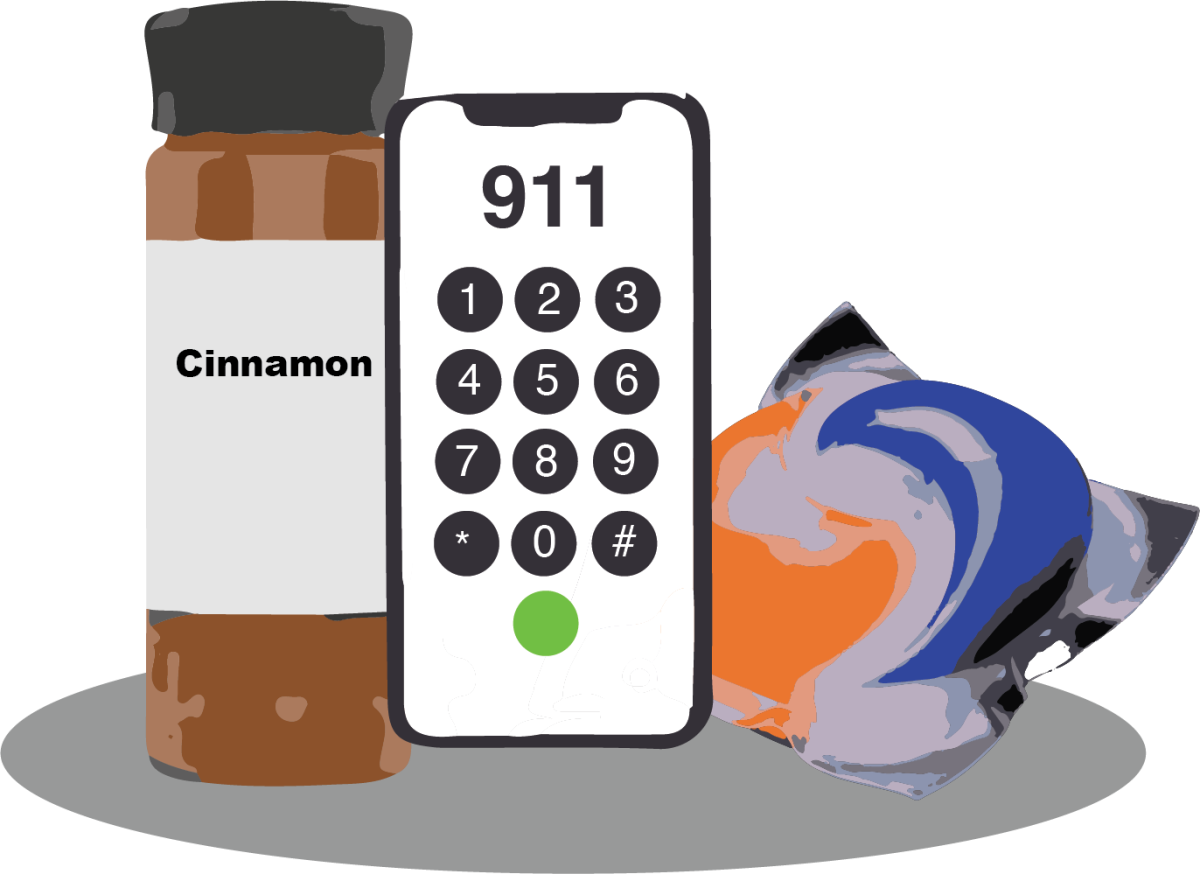From the McDonald’s Grimace Shake to the Bird Box Challenge, today’s teens are familiar with viral trends, whether it’s new audios or nostalgic throwbacks. What doesn’t often go viral are the sometimes dire consequences of indulging in these trends. In 2022, when the Fire Challenge was popular, then Miami 6th grader Nick Howell lit a splash of alcohol with a lighter, causing him to suffer many severe burns that landed him in a hospital for a little over 6 months. In another case, Josh Zeyrihun, a 12-year-old in Colorado, died trying the Blackout Challenge where individuals choke themselves to obtain a euphoric rush shortly after.
Over recent years, as social media has grown in popularity, so have the number of videos and posts circulating dangerous and straight-up fatal content. With around 5.04 billion people worldwide having social media, that’s endless hours of scrolling through content, much of it reckless behavior.
The Trinity campus has not been immune from the impact of viral challenges.
” There is a definite increase in the number of students who report what they’re seeing [on social media] and then we’ve also seen direct evidence of damage on campus that has been the result of certain TikTok trends,” middle school dean Jeff Wilson said.
Apart from spreading so quickly, social media tends to create a false sense of popularity. Wilson points out that social media’s algorithms exaggerate just how many teens are doing such challenges.
“Social media trends make it seem like [trends] are big movements, that everybody is them when it’s really not,” Wilson said. “There’s nobody on campus doing [trends], but there are 7,000 videos that you can scroll through and it makes 7,000 sound like a lot of people doing it, but there’s 8 billion people in the world, so that’s a very, very minor part of the population.”
Since the rise of social media, many trends have gone viral, but only recently have they become more dangerous. One example of a dangerous challenge is the viral One Chip Challenge, which was started in late 2021. It consists of a person eating the world’s hottest chip released by Paqui.
“[The One Chip Challenge is] not really safe, but one of my mom’s colleagues, her daughter actually [did] a One Chip Challenge and she was sent to the hospital.” Trinity 8th grader Srian Kondapalli said.
As the trend kept growing, Kondapalli ended up trying it for himself.
“The one chip powder was in my eye because I rubbed it on accident and the powder fell in,” Kondapalli said. “It was painful but it went away after an hour or so.”
Although he was lucky, Kondapalli’s experience could have ended poorly. Capsaicin, which is what makes chili peppers spicy, can irritate the eyes and mouth. Apart from this, the excessive amount of capsaicin in the One Chip could cause heart palpitations and heart attacks.
Since teenagers are usually the main consumers of challenge-related content due to their presence on various social media platforms, they are at an increased risk of influence.
The Cinnamon Challenge garnered attention in the late 2010s and has since resurfaced on social media platforms during Covid. The challenge consists of participants eating a spoonful of cinnamon in under a minute without water. At first glance, this sounds harmless, as most people doing this trend know cinnamon as an often-used spice in the kitchen with no risks whatsoever. Quite the opposite, when dry powders such as cinnamon are consumed, the substance coats and dries out the mouth and throat, causing suffocation.
While many parents believe that peer pressure is the main cause of dangerous trends circling teens’ social lives, there is a psychological aspect to wanting to follow a crowd, because after all, who has not experienced the longing for acceptance and status?
“[Dangerous actions] all come down to wanting to be accepted by your peers,” Wilson said.
Teens as well as adults can also be prone to short-term gratification, meaning the immediate desire to feel satisfied or be happy.
“Generally our brains are wired for short-term gratification,” AP Psychology teacher Michael Brown. “It’s wired to reward us for dumb short-term stuff more than long-term [things].”
Most of the time, people chalk up being reckless to ignorance, but this is not entirely accurate. Brown states that another reason for blatantly dangerous trends being followed is for dopamine.
“There’s that euphori[c] rush that we get from doing stuff, whether it’s dangerous or not,” Brown said.
Teenagers in particular put themselves at risk because a teenager’s brain is not fully developed when its most susceptible to following trends. Therefore, the teen brain lacks some of the rational decision-making parts that will help to weigh risk factors.
While teens have succumbed to many challenges, others have used social media virality for good. In 2014, the Ice Bucket Challenge was used to raise money and awareness for Alzheimer’s Disease. Participants would pour a bucket of ice water above their heads and post it on social media. Overall, $220 million was raised to research Alzheimer’s in various organizations. Finally, as social media keeps thriving amidst youth, so will the seemingly never-ending content and fads worldwide, but it is up to us to decide whether we will use it beneficially or not.














